Happy fall! I’ve had a cup of coffee, a mug of tea, and four pumpkin chocolate chip muffins this morning. Zoe and I took Marmalade on a long walk, bundled up in sweatshirts and sweatpants, enjoying the early turners—trees that already have bunches of yellow leaves appearing.
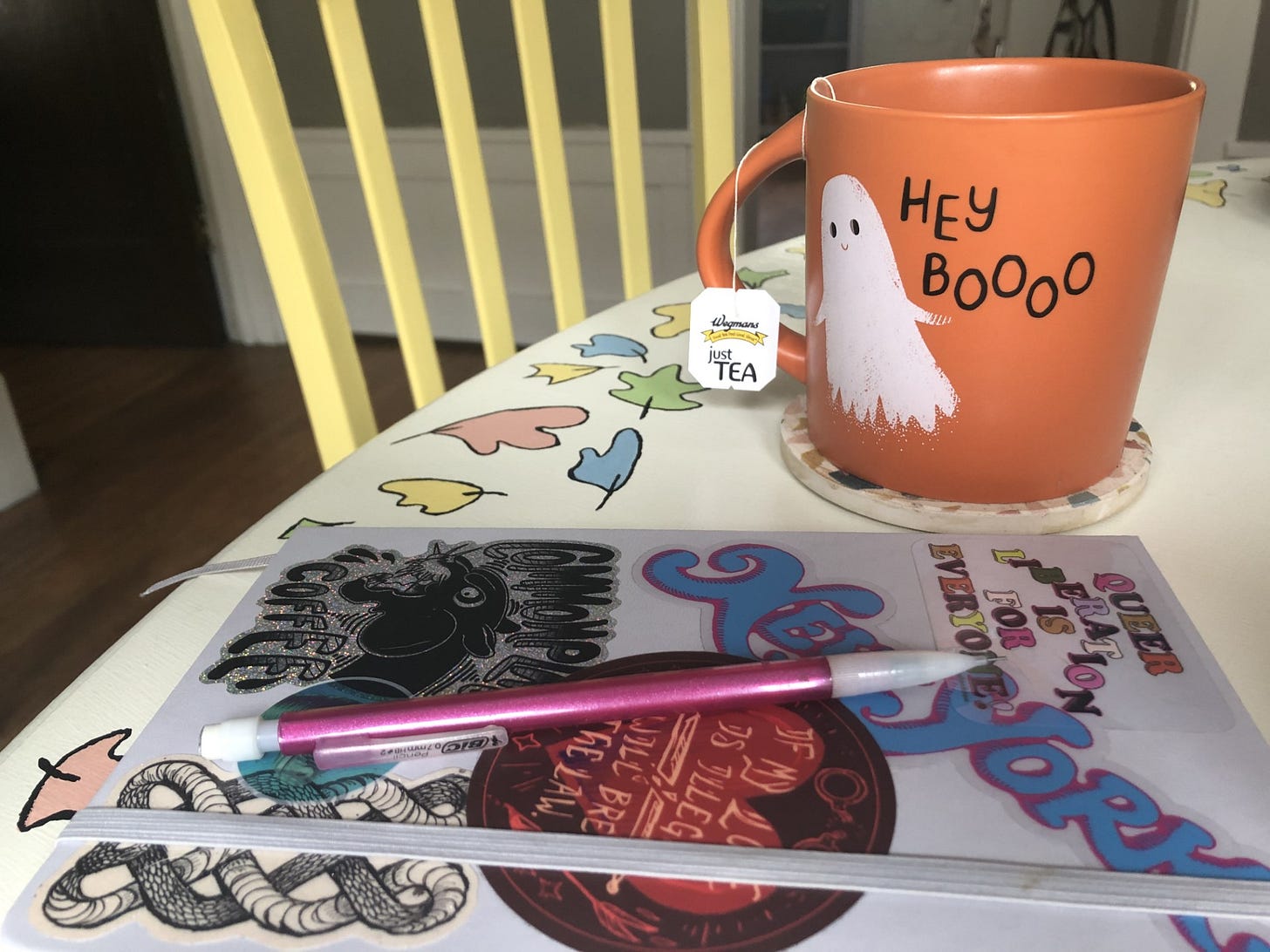
I’ll be honest with you. I don’t feel like writing much today. I’ve been under the weather this past week, and like I said in last week’s newsletter, I have complicated feelings about this time of year:
But I think I’ve spent a lot of time in the past few weeks worried about the existential, and that isn’t serving me well. So, today, I’m going to four small, concrete things that have been helping me feel good lately.
Morning walks with Marmalade
Since I work from home, I end up taking Marmalade on two or three walks each day. Sometime between 8:30 and 9:30, I take her for a morning walk. Lately, I listen to NPR’s podcast Up First while I walk; three news stories a day is plenty for me. The combination of listening to the podcast and limiting my social media time each day is helping me feel a bit less dread about the state of the world each day.

Walks with Marmalade (again)
When I’m not listening to Up First, I’m listening to music or—perhaps embarrassingly—talking to Marmie. I love how her ears perk up with curiosity, how much time she spends sniffing. She gets so much pleasure from exploring the world.
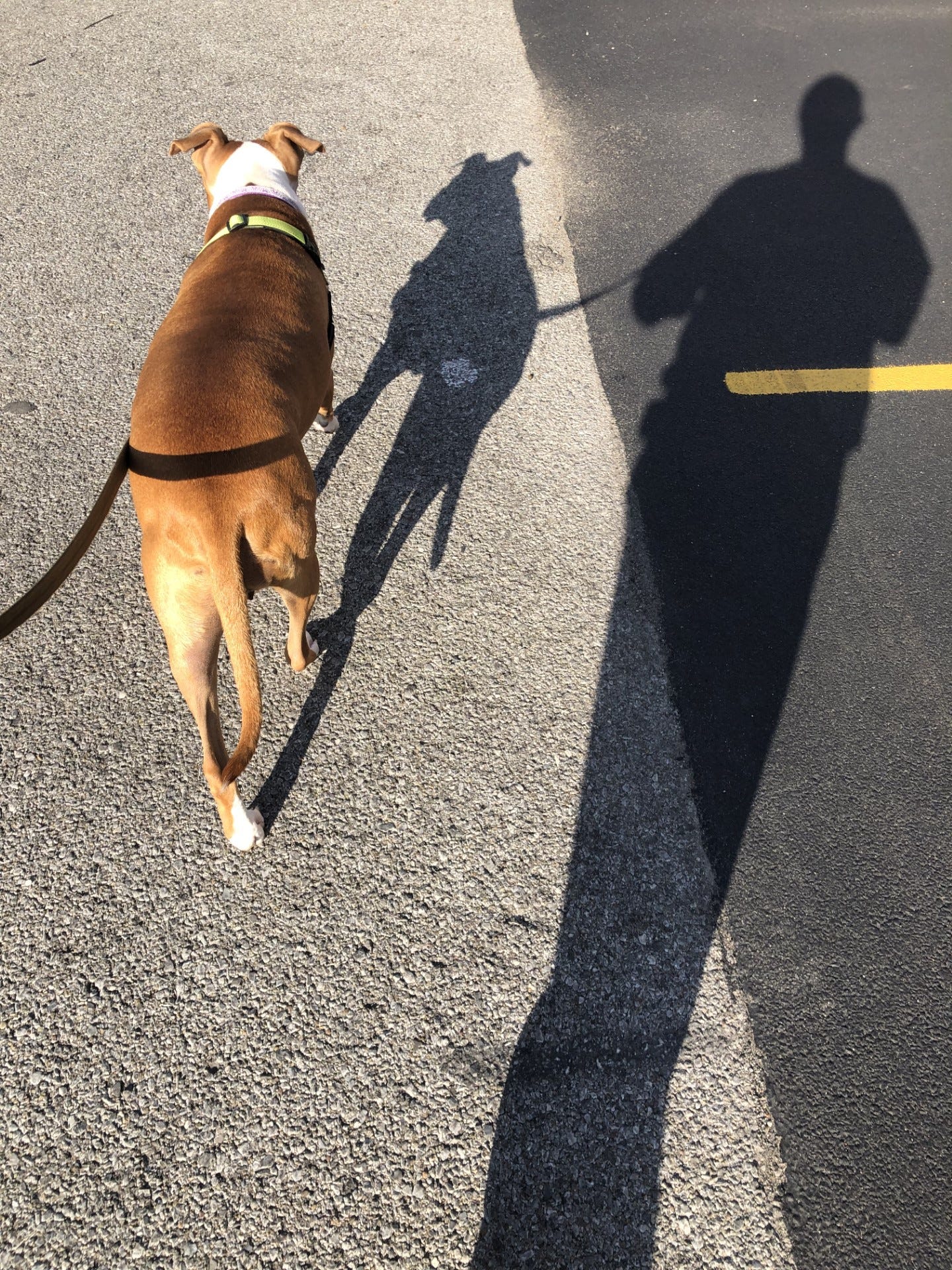
Sometimes, the explorations lead to terrible discoveries, AKA her tugging on the leash and me looking up to find a dead rat, the size of which I thought was only possible in the sewers of New York City. I had no idea hornets were so into corpses. Disgusting.
Still, it’s nice to have a break from sitting in front of my laptop, even if it involves the occasional roadkill sighting.
Little rituals with Zoe
Zoe and I love to honor the changing of the seasons; that’s why we got married on the summer solstice. I think our personal favorite is the autumn equinox—at least, mine is. We took last year’s ritual and turned it into a tradition. Zoe baked pumpkin chocolate chip bread, and we curled up on the couch under a quilt to watch Over the Garden Wall while drinking warm apple cider.
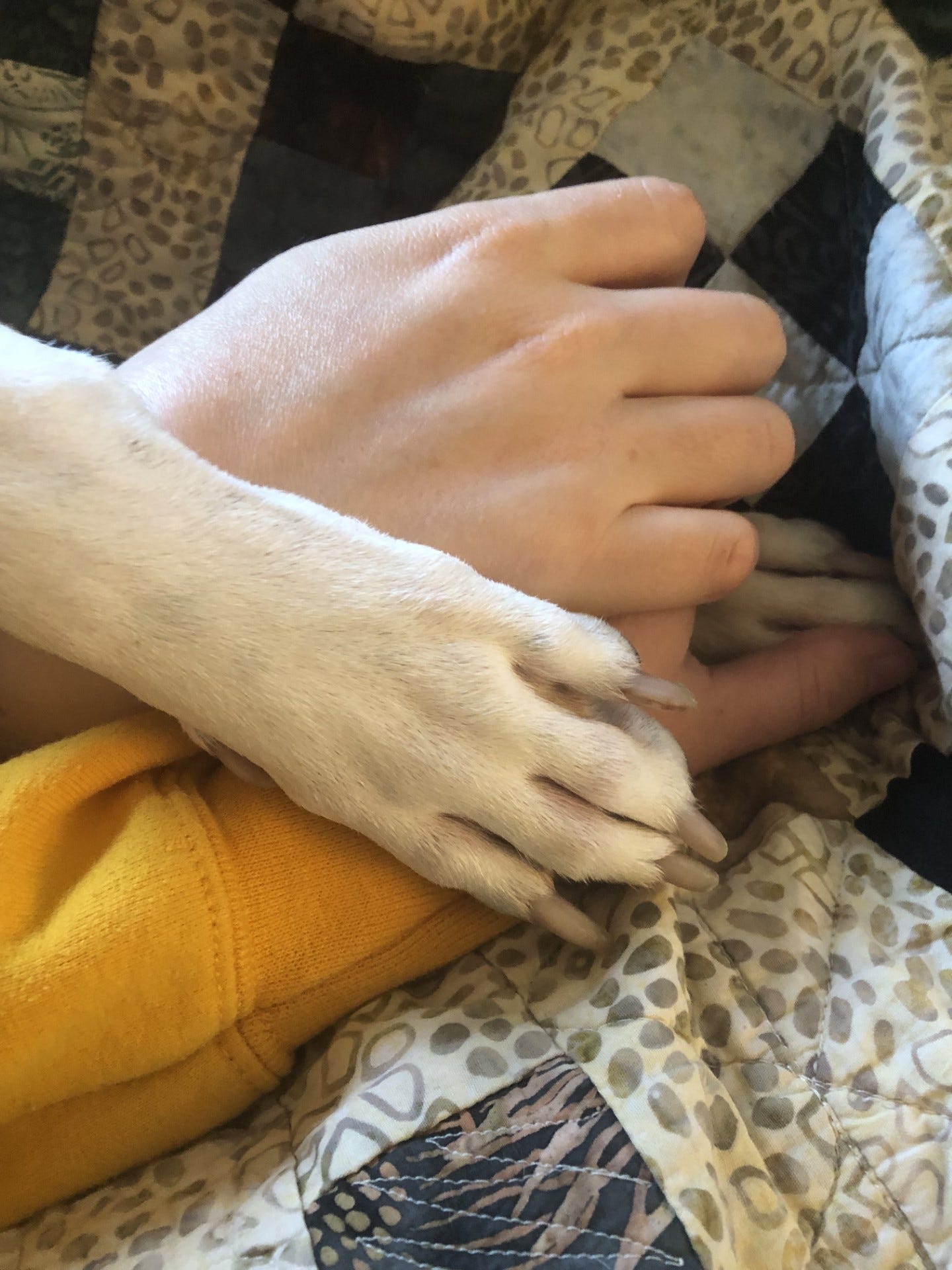
Routines and rituals are important to both of us. Every morning, Zoe brews our coffee and makes our breakfast, a routine that I know they value. We discuss our “best part, worst part” every evening (sometimes, if we’ve had hard days, we just focus on the best part). We write our morning pages as close to daily as we can. They’re little things, but important ones.
The rhythms of work
I organize my life not by days, months, years, but by projects. I’m working on several right now, each of which comes with different degrees of pleasure and stress. Zoe does a great job helping me try to stay organized and focused, which I deeply appreciate. Marmie helps out by laying down on top of me once I’ve started doing work, which makes it near-impossible to get up—a great strategy to keep me focused on the same task for a while.
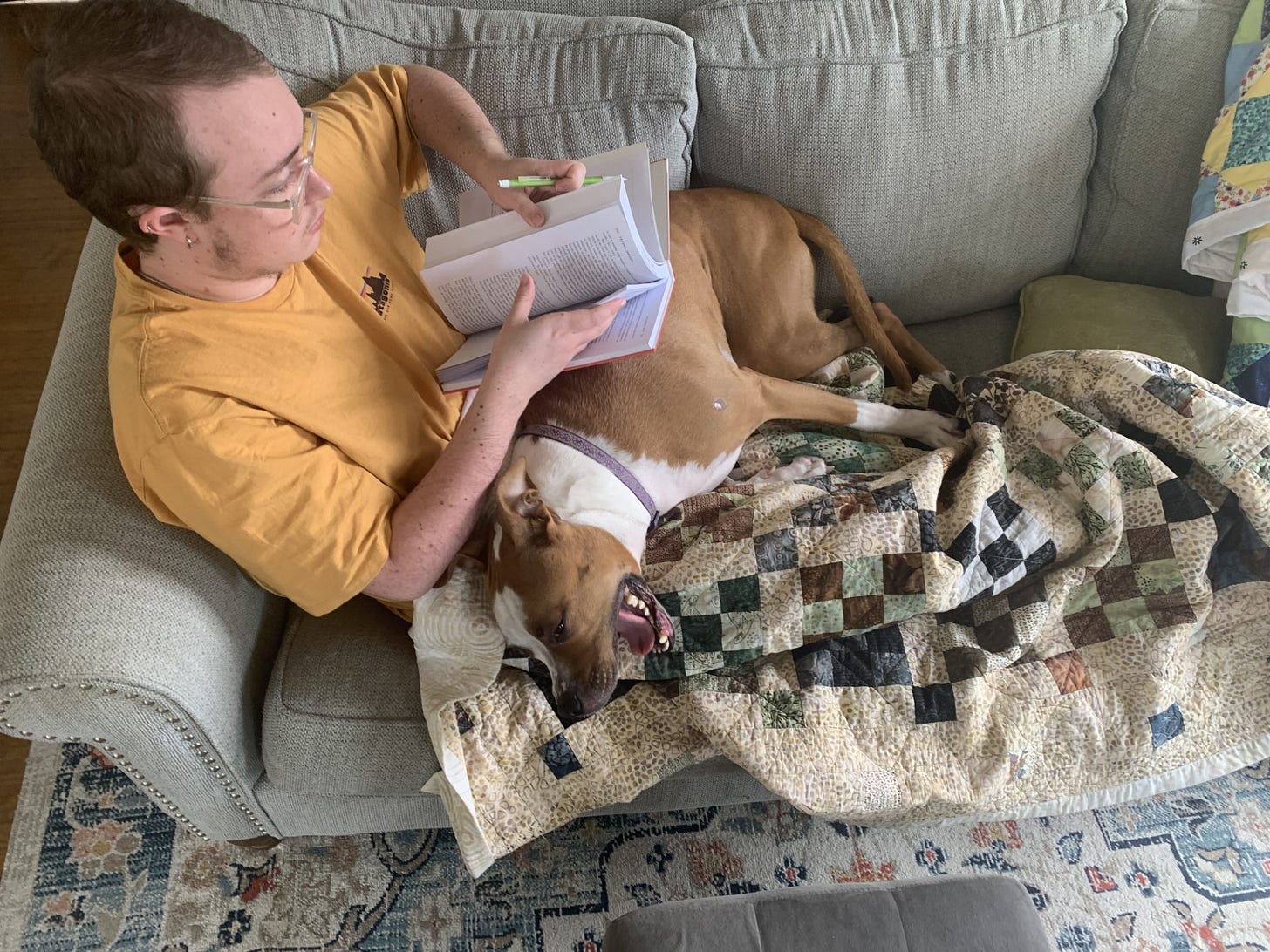
I know that for some, work is the last thing they want to think about when they’re feeling burnt out. Sometimes, that’s true for me, but more often than not, breaks from work leave me feeling more anxious and stressed about what needs to get done. Finding ways to get a little bit done at a time—and to fit the work into the natural flows of my days—helps me to recenter and reconnect with myself and my interests.
A case for better public transit. Since first reading it, I’ve been thinking about this New York Times article, “For South Korea’s Senior Subway Riders, the Joy Is in the Journey.” People older than sixty-five get to ride the subway system in Seoul for free, which is great in and of itself, but the article is specifically about members of that demographic who use that freedom to ride the rails with no particular destination in mind, often taking the trains to the end of their lines. About fifteen percent of subway riders qualify for the free rides, and of that group, the individuals who spend their days on the trains are nicknamed “Jigong Geosa.”
The article spends time on the economics of it: the no-fare policy is intended to help the elderly who live on incredibly limited incomes—four in ten South Koreans over sixty-five live in poverty—because South Korea’s pension system wasn’t implemented until the 1988. The policy is often the subject of debate as a result of South Korea’s aging population; when the policy was implemented, less than four percent of the city was over the age of sixty-five, as opposed to over seventeen percept of the population today. Politicians often recommend scrapping it. The response from Korea’s senior citizens? They didn’t ask to get old. And the ability to ride the rails for free allows them to stay active and see new parts of the city. Kim Ho-il, the president of the Korea Senior Citizens Association, asked at a February 2023 forum on cutting the program, “Why are you trying to take this happiness away?”
That, ultimately, is why I love the no-fare policy so much. I was incredibly moved by the stories of the people interviewed by NYT for the article. Jeon Jong-duek, a retired math professor, travels the city with a book on Chinese poetry. Lee Jin-ho, a retired interior designer, enjoys the air conditioning of the subway on hot summer days—most homes in South Korea don’t have air conditioning, which can be fatal for the elderly, especially as the climate continues to heat. Bae Gi-man, a ninety-one-year-old man with a charming flat cap in his photos for the article, said the free subway rides give him an excuse to get out of the house, helping him manage his depression since his wife’s passing in 2022. Elderly men gather in groups at subway stops—chatting, building community in a third place. None of them would be able to afford their trips if they had to pay; when you’re living in poverty, $1.15 a ride adds up quickly. And they have unofficial rules they follow to avoid being nuisances—not riding during rush hour because everyone is in a hurry and the trains are more crowded, not standing in front of young people who are seated so that they don’t feel pressured to give up their seats. It’s such a beautiful, earnest way of building community in a city that is unable to adequately care for its elderly population. It’s also heartbreaking to think about the care and attention they put into not burdening young people—not because they’re causing problems but because they feel like their very presence is public life is burdensome.
When I think about Bae Gi-man, my eyes burn with unshed tears. I hope the city doesn’t change its no-fare policy; elderly people deserve the freedom to access air conditioning, to spend time with one another, to see the city, to exist in public spaces.
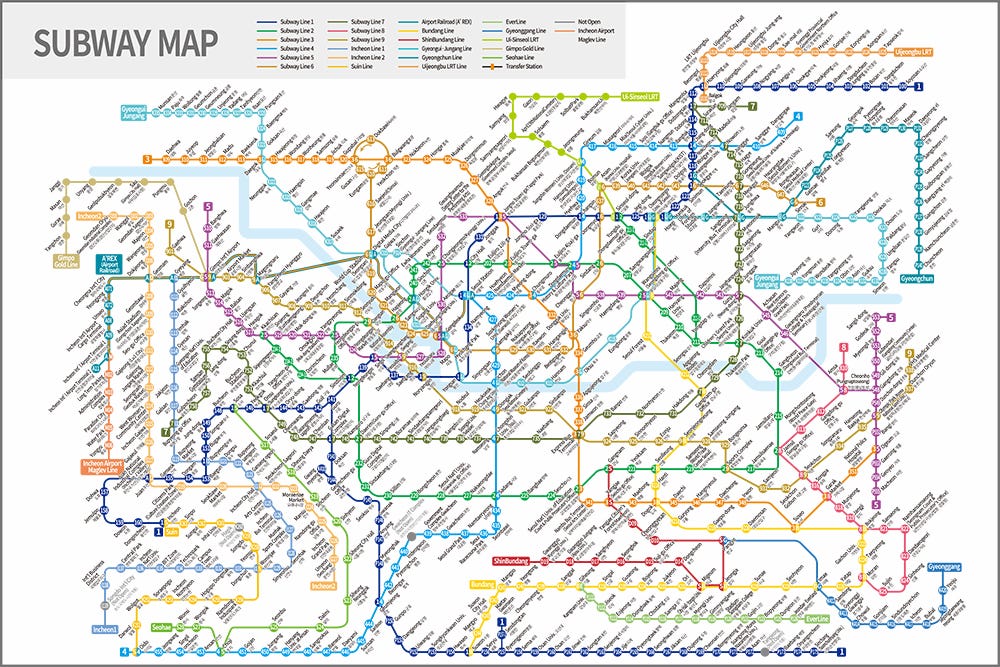
Killer whale craze. That’s right—it’s special interest time! This weekend, Zoe and I watched the episode “Antarctic Killer Waves” from Animals up Close with Bertie Gregory. (Hot tip: nature documentaries are great for entertainment while crafting; I was sewing while we watched.) The episode focused on B1 killer whales—of which there are perhaps a hundred left—which are the only animals to use a hunting strategy called “wave-washing.” A group hunting together, often a family, will swim under sea ice in perfect synchronicity, using their tails to send a wave of water over its surface, washing seals off the ice and into the water, where the killer whales catch and devour them. It’s incredible to watch.
The two scenes I found the most fascinating and wonderful to watch were both about parenthood. In one, a family hunting together ultimately lost their catch because they were teaching the calf how to hunt; when the adult released the seal from its teeth for the baby to chase, it ultimately made it to safety (though battered, bruised, and bloody). But killer whales need to teach their young how to hunt with strategies passed down for generations; passing on that knowledge is more important than one particular seal.
In another beautiful moment—one which moved Zoe to tears—a seal hunt was disrupted by humpback whales. Scientists believe that because killer whales sometimes hunt humpback whale calves, the adults attempt to disrupt any killer whale hunt they come across. In this case, the killer whales were ultimately successful (and also kind of dickish—they showed off the dead seal like a trophy, gloating in the faces of the humpbacks). But it was so incredible to think of humpback whales attempting to make the ocean safer for all sorts of prey animals because of the grief of losing their own young.
Am I anthropomorphizing these creatures? Maybe, but I don’t think so. Anyone who has spent more than a few minutes talking to me about marine life knows that I believe that consciousness and a wide spectrum of emotional experiences are possible for so many animals, from killer whales to humpbacks to octopuses.
I also think that “anthropomorphizing” them, if that’s what I’m doing, might be a necessary rhetorical strategy. Even while I’m writing this, I’m starting to cry thinking about when the day inevitably comes that a wildlife documentarian goes out to film killer whales and can’t find a single one. B1s need sea ice, not glacial ice, to hunt—glacial ice goes too deep underwater, and their hunting strategy depends on washing the wave over the ice as they swim under it to get the seal as it slides off the other side—and sea ice is melting fast. Antarctica is the fastest-warming part of the world; in one scene, Gregory notes that on past expeditions, he’s been concerned with staying warm, but on this one, he actually had to remove layers some days because he was too warm. I don’t know how to make people care about the mass extinctions we’re seeing. “Heartbreaking” doesn’t capture my grief over the loss of these beautiful creatures. No living thing in our planet’s history—no, not even dinosaurs—has been as huge as a blue whale, and I fear we’ll never see a creature that monumental again. Polar bears swim for hours and hours to find food, carrying their young on their backs. Some albatrosses spend six years of their lives not touching land. Killer whales pass down hunting strategies the way we pass down holiday traditions—and those multi-generational skills will die with them. What’s so fucking terrible about seeing these animals as beings who think and feel?
My quilting is coming along nicely! Zoe has been kind enough to do lots of ironing for me—and lots of reassuring that my stitches are straight enough. Hopefully, I’ll have enough progress made to share a photo or two next week.
Peppermint herbal tea has been getting me through my cold, though I’ve been feeling sick for about a week straight and am frankly getting tired of it. I’ll have to convince Zoe to make me some more chicken stew!
At work, I got a shoutout from one of the senior leadership team members in a company-wide Slack channel, which I know sounds so capitalist and dorky, but it felt good to be seen—not just for my hard work but for the kindness and empathy with which I treat my coworkers. Like a giddy little kid, I take a photo of my computer screen anytime someone sends me a nice message, then send the photo to my Mom and to Zoe.
My Dad has had some recent health complications. I’m reluctant to write about his disease and its progression in my newsletter, though I feel called to do so increasingly often. If you believe in prayer, I ask that you pray for him and his health. If you don’t, maybe just send some good vibes his way!
I saw this flower on one of my walks and thought it was beautiful, so I’ll leave you with it.








